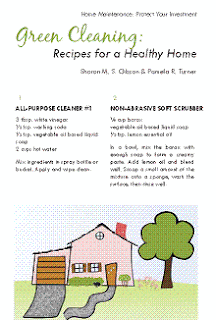A person who cleans for a living touches or cleans around hundreds of fragile items each week.
Until recently, I personally went into the job with the attitude that probability dictates that things will get broken. You clean a hundred houses, you're going to lose at least one knickknack.
That's a reasonable attitude, but if that one knickknack happens to be an irreplaceable personal heirloom, telling the client that it was inevitable and buying something that looks like it is cold comfort.
In my time working for myself and other people, I have seen two approaches to avoiding breakage. The main one is to never touch anything fragile. That means letting dust collect around that giant antique vase on the floor and watching cobwebs form around the fine China dishes displayed on top of the cabinet. Many clients prefer that, and will point out items they don't want to be touched upfront. I have one client I do careful allergy-type dusting for who can't clean much herself, but she has a sentimental figurine shelf that she takes care of herself for that reason.
A second approach is to clean everything and pray a lot. That was always my approach. If you don't tell me not to clean it, I'll at least wave a duster at it every time. That works great most of the time. But every so often, there will be items that my gut tells me to give a wide berth. Nearly every time I don't, I find myself apologizing profusely and scrambling to make good. (And by every time, I mean I can count the casualties from five years of cleaning houses off and on on one hand.)
If you're a cleaner, or you are thinking about employing one, here are some general rules for spotting hazards. Avoiding putting your stuff in those situations can go along way to ensuring it makes it through cleaning day intact.
Location, location, location
There is a physical "danger zone" below knee-level and above eye-level. Anytime you have to reach to pick up or dust over an object, you risk knocking it over. Items displayed on the floor or on low surfaces where they are likely to be set on the floor when you are cleaning can get stepped on, knocked over or risk chips and breaks from being put down too fast on a hard floor. Even under the bed is a danger zone, as few cleaners want to be caught not cleaning under the bed, but it is not unheard of for them to poke a sweeper or broom under there without looking first (ahem). Items that have to be awkwardly reached behind or between things are also in a danger zone. As are ones that you can't see the bottom of because they are above tippy-toes eye level. Any flat surface that cannot be seen while standing on the floor is one that should not be touched without a step ladder. You can't know the shelf or ledge is empty until you physically look at it.
Balancing act
Precariously balanced things are another big minefield. My big example is a heavy flower pot or vase on a little wood or wire stand on the floor. Anytime the load is heavier than whatever it's sitting on, you have an unstable situation that can lead to a broken pot or broken stand. Even on a stable surface like a counter, a light dish holding heavy decorative stones or a potted plant won't withstand being picked up or scooted with the load on it. Wall and stand displays for fragile things like dishes and sculptures are easy to accidentally knock down to begin with, so if they are not anchored and barely standing or hanging in place, they are likely to get knocked down, or even fall on their own when something nearby is moved.
Traffic hazard
Delicate things in high-traffic and high-cleaning activity areas are another one. The bathroom is a big one. People can't help but decorate the sides of those big "garden" type bathtubs, for example. I have seen glass vases, seashells and candlesticks sitting on the edges of tubs that only the most standoffish cleaners wouldn't want to clear and wipe. The back of the toilet and the top of the medicine cabinet are two other places people like to decorate. Toilet tank lids are usually slightly rounded, and medicine cabinet tops are always well above eye level, so both need to be approached with extreme caution. Kitchens, window sills and entryways are other high-traffic, high cleaning action areas that are dangerous for fragile items.
Simply put, it is a housecleaner's job to handle all those situations. No house on Earth has all its fragile items in a locked China cabinet or on a chest-level whatnot shelf. Odds are good that a commercial "quick clean" service will automatically bypass such situations unless the cleaners are expressly told that the areas need to be cleaned. Even when a cleaner zips in and out with no intention of meticulously cleaning everything, your stuff is still subject to people bumping around and waving dusters and rags in the vicinity.
The best thing to do is be mindful, and keep valuables out of risky situations. For the cleaner's part, she or he has to be aware of all breakage hazards and ask for permission and use care when cleaning around precariously situated delicate things. Trust me, any client would prefer a spot of dust to a shattered family heirloom. If an item is that important and that fragile, the easiest route would be to ignore it and let the client keep it clean and move it around once in a while so you can dust. It's helpful for a client to note what's particularly valuable in his or her home, but a cleaner really must approach everything as though it cannot be replaced.












